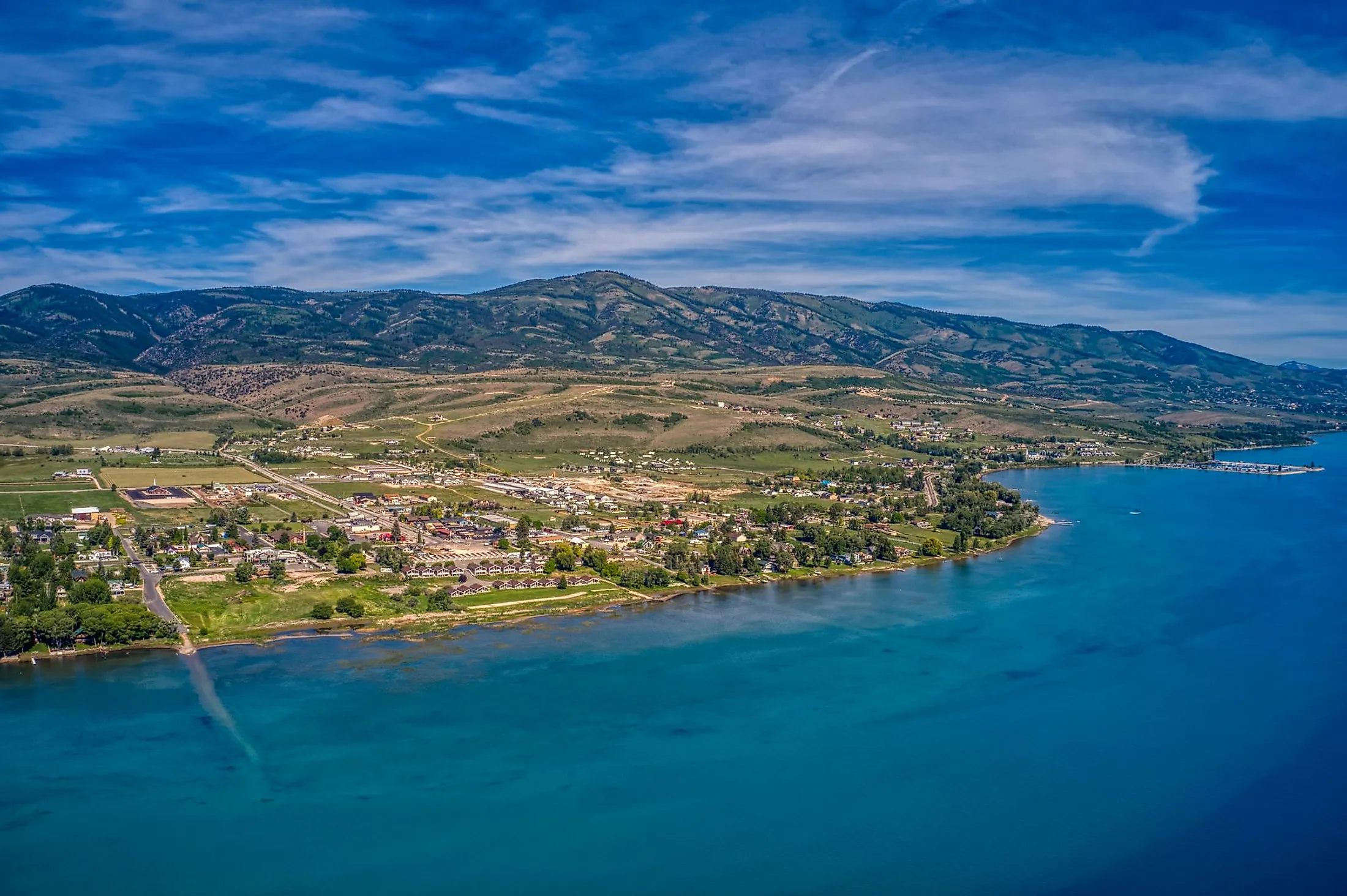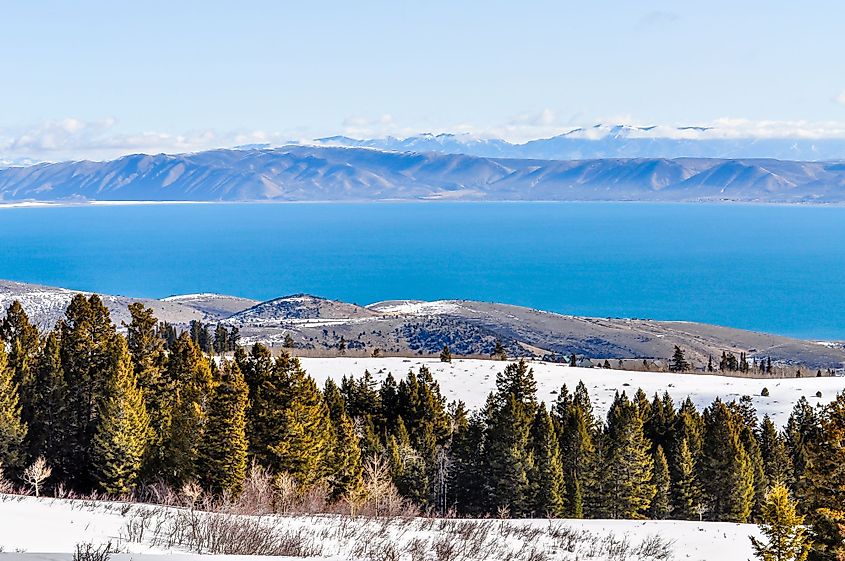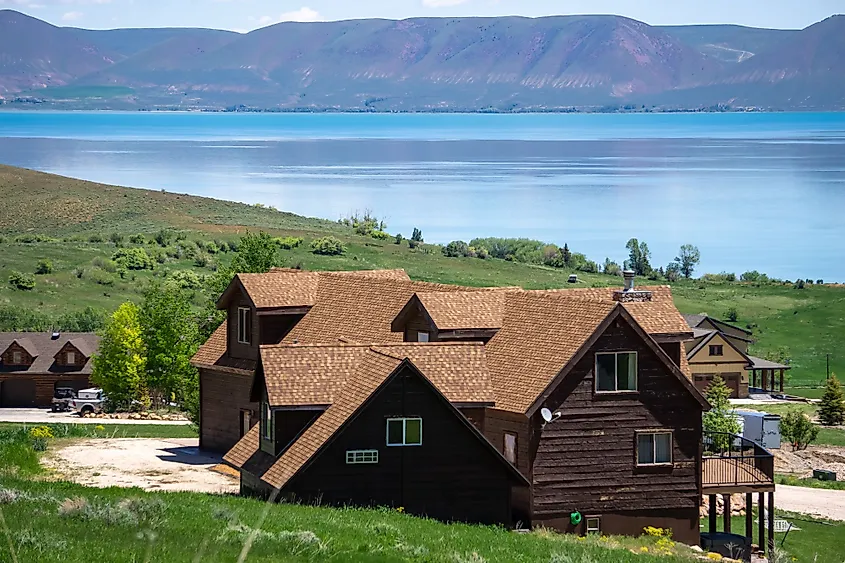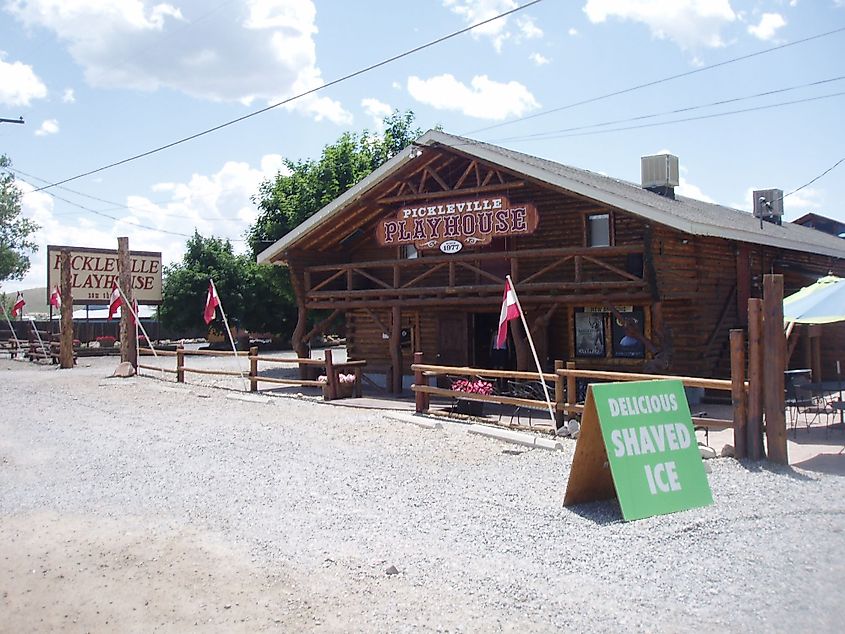
Bear Lake, Utah-Idaho
Bear Lake is a big natural freshwater lake situated on the boundary between the US States of Idaho and Utah. The lake has been rightfully nicknamed the "Caribbean of the Rockies" due to its turquoise color waters, which has been attributed to the refraction of the calcium-carbonate deposits suspended in the lake. Bear Lake is a popular destination for athletes and tourists, and the area surrounding it produces superior-quality raspberries.
Geography Of Bear Lake

Covering an area of 280 sq. km, Bear Lake has a length of 29.5 km and a maximum width of 11.4 km. Situated at an elevation of 1,806 m, the lake has an average depth of 29 m and reaches a maximum depth of 63 m. Bear Lake sits in a half-graben valley along the Wasatch Range's northeastern side and the Bear River Mountains' eastern side. The lake receives its primary inflows from the Bear River diversion creeks, including Swan Creek, South Eden, Fish Haven, North Eden, and St. Charles. The lake drains via the Bear Lake Outlet Canal. Bear Lake is currently part of two separate counties: Bear Lake County in southeast Idaho and Rich County in northern Utah. The closest three settlements to the lake are Garden City, Utah; Fish Haven, Idaho; and Laketown, Utah. The main roads that straddle the lake are Highways 30 and 89 on the lake's west and North Cisco Road, followed by Eastshore Road, on the lake's east.
History Of Bear Lake

Bear Lake is believed to be more than 250,000 years old and has been formed through the process of Fault Subsidence, which is still ongoing and leading to the deepening of the lake along its eastern side. The first known inhabitants of the area around the lake were the Shoshone tribes. The first recorded Europeans to see the Lake were French-Canadian trappers in 1818. Donald McKenzie, a Scottish-Canadian explorer, initially named the lake "Black Bear Lake" in 1819. The lake's southern end served as the location of the yearly Rocky Mountain Rendezvous. The first permanent European settlers near the lake were Mormons led by Charles C. Rich in 1863. Over the years, Bear Lake has become a popular tourist and recreation destination.
Ecology Of Bear Lake
The unique properties of the lake's water have led to the evolution of several notable faunal species that are endemic to Bear Lake. Some of these endemic species include Bonneville cutthroat trout, Bonneville whitefish, Bear Lake sculpin, Bonneville cisco, and Bear Lake whitefish. The Bear Lake National Wildlife Refuge is home to its famous raspberries, sedges, and bulrush marsh. Local fauna here includes white-faced ibis birds, moose, skunks, and cottontail rabbits.
Recreation In Bear Lake

Bear Lake serves as a popular vacation destination and offers several recreational activities all through the year. During summer, the visitors can enjoy swimming, boating, jet skiing, water skiing, and sailing, while during winters, hunting, ice fishing, snow skiing, and snow mobiling are offered. Garden City also annually celebrates the Raspberry Days Festival during the first week of August attracting thousands of people from all over the world.










